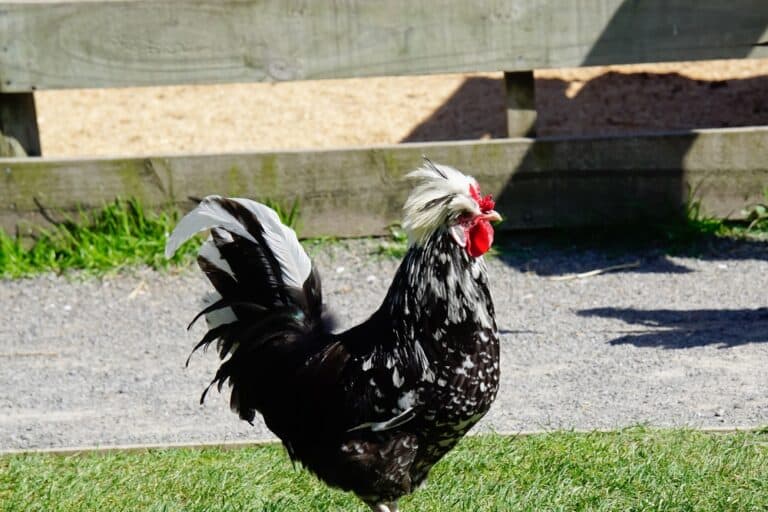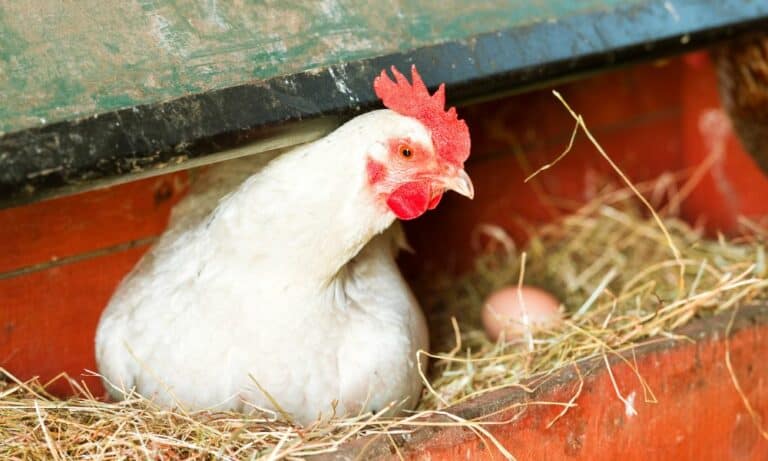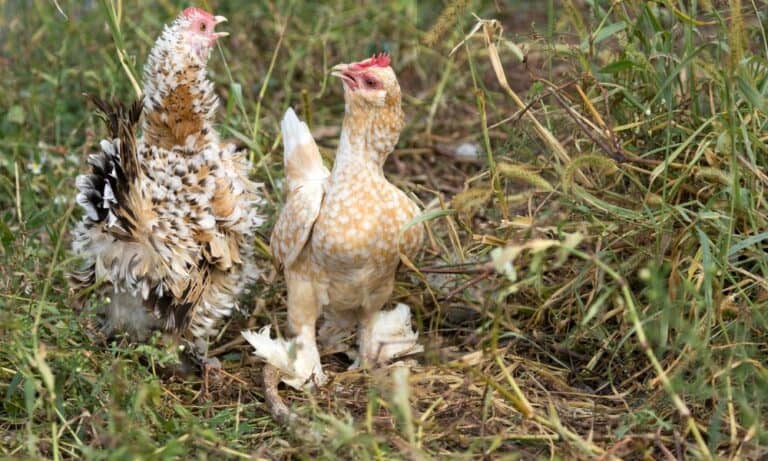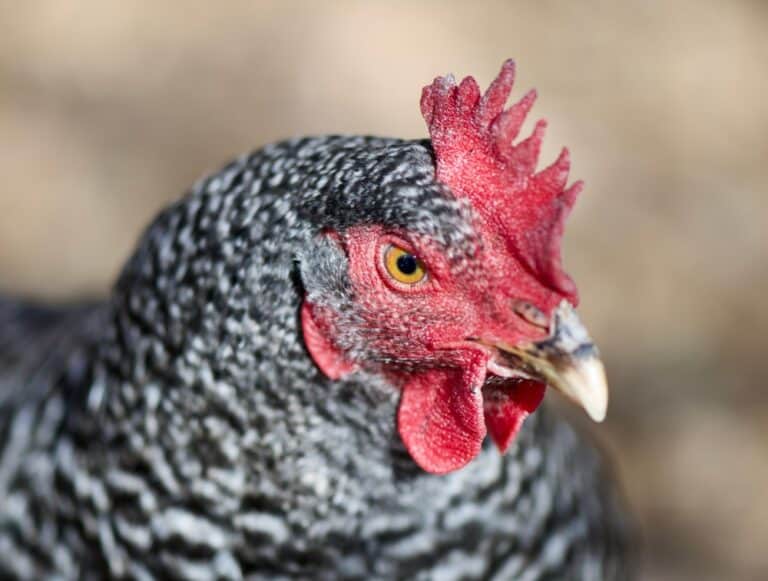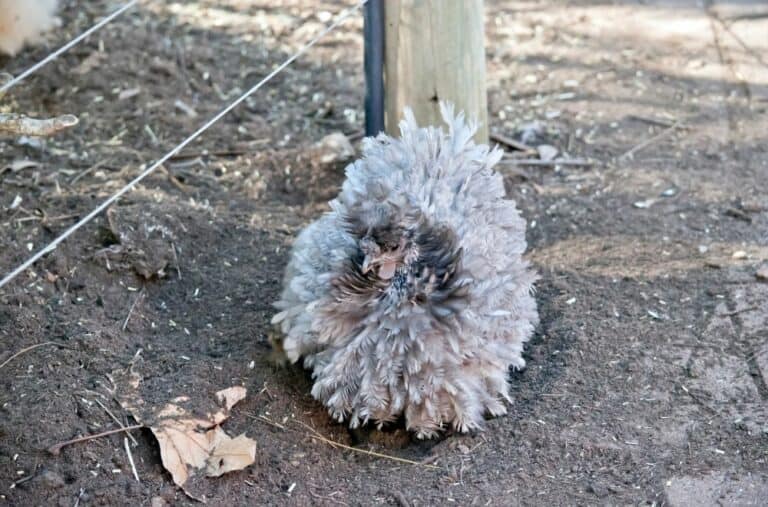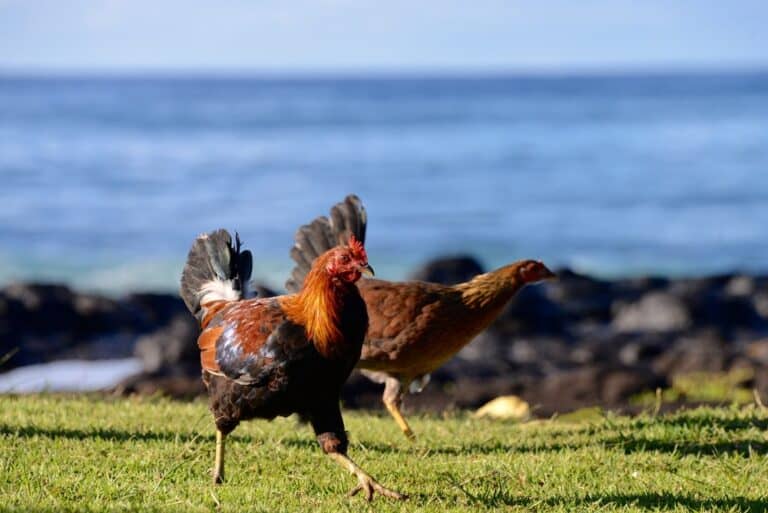In recent years, the use of dual-purpose chickens has increased drastically in the agricultural sector, especially backyard farms. Studies suggest that these chickens are not only good for flock owners, but are also advantageous in terms of animal welfare.
One breed that is particularly gaining popularity among backyard chicken keepers is the Red Ranger Chicken. Although it is essentially a meat bird, the Red Ranger Chicken does lay enough eggs to be classified as a dual-purpose chicken.
Now, if you’re wondering where this breed comes from, what it’s like, how to take care of it, and if you should give into the hype and get one or not— you’re in the right place. Within this Red Ranger Chicken Guide, we will go through all of this, and more.
Let’s get started with everything you need to know about the red ranger chicken breed!
Red Ranger Chicken Breed Overview
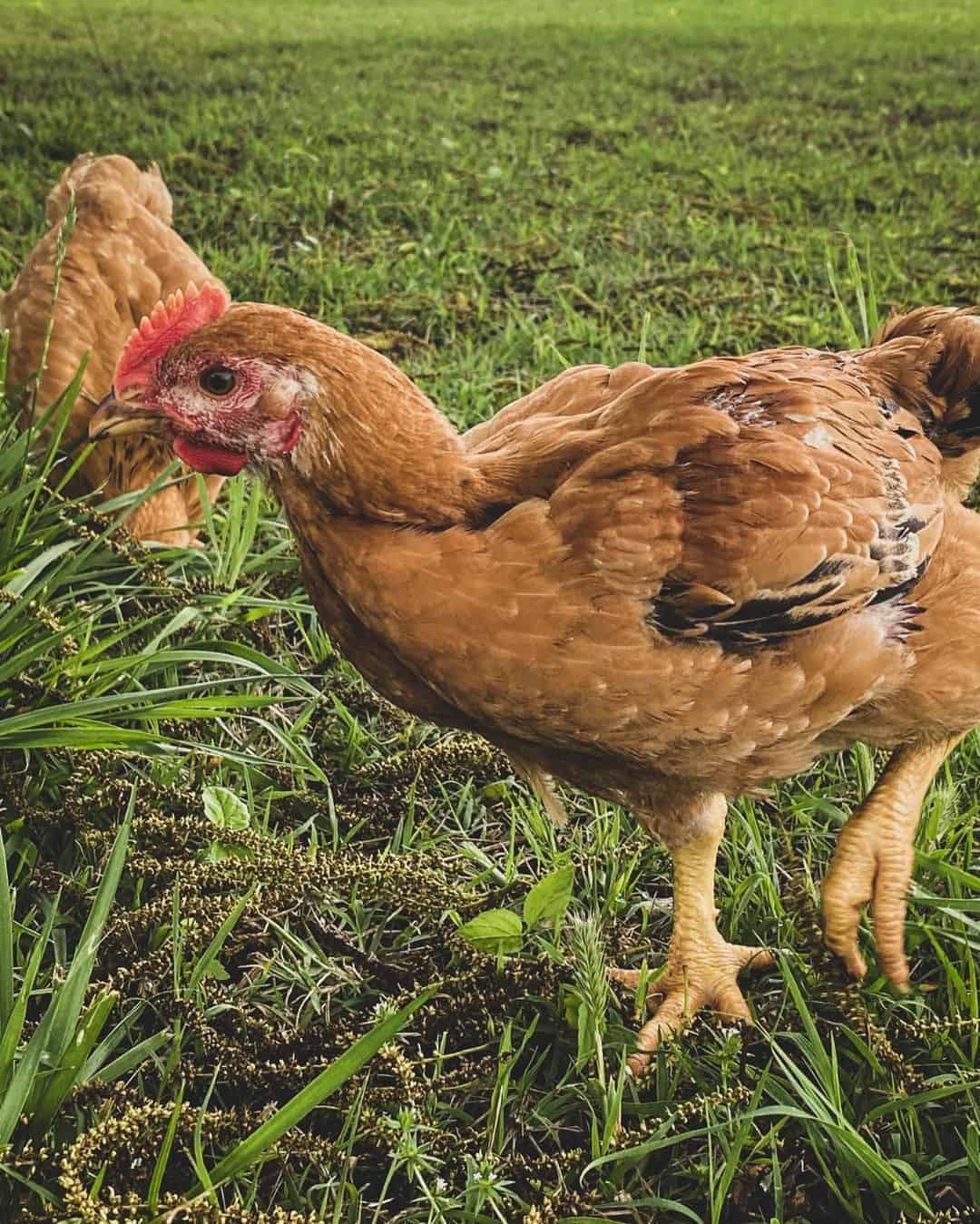
By now, you already know that red rangers are dual-purpose chickens. For reference, dual-purpose birds are the chickens used for both meat and eggs. But there’s more to this breed. For one, it is not actually a breed.
Red Ranger Chickens are a hybrid breed with unknown origins. They are a type of red broiler but are not officially recognized yet, and there are no breed standards for them either.
Although their lineage is unknown, most believe that Red Rangers are a cross between Rhode Island Reds and Cornish Rocks. The breed was first introduced in the market as a niche filler.
At the time, farmers had two options: wait 6 months to butcher other dual-purpose breeds (they took time to mature), or raise Cornish Rocks.
Red Ranger Chickens, on the other hand, are ready to be butchered at only 12 to 14 weeks old. So, this breed served as a supplementary breed to other broiler and egg-laying breeds, and the waiting time was cut down for farmers.
If we discuss the appearance, Red Rangers are true to their name. They are red in color, but the shade leans more towards honey brown than dark red. Also, they have a healthy, muscular, and solid build, almost like a well-defined rectangle. Their yellow legs are muscular and strong, too.
However, the red rangers lack breast meat. Their breasts do not develop as well as those of other chicken breeds. Despite that, these are still healthy, medium-sized birds. Fully-grown males (roosters) of this breed can weigh up to 6 to 10 pounds, while fully-grown females (hens) can weigh anywhere between 5 to 7 pounds.
Red Ranger Chicken Personality & Temperament
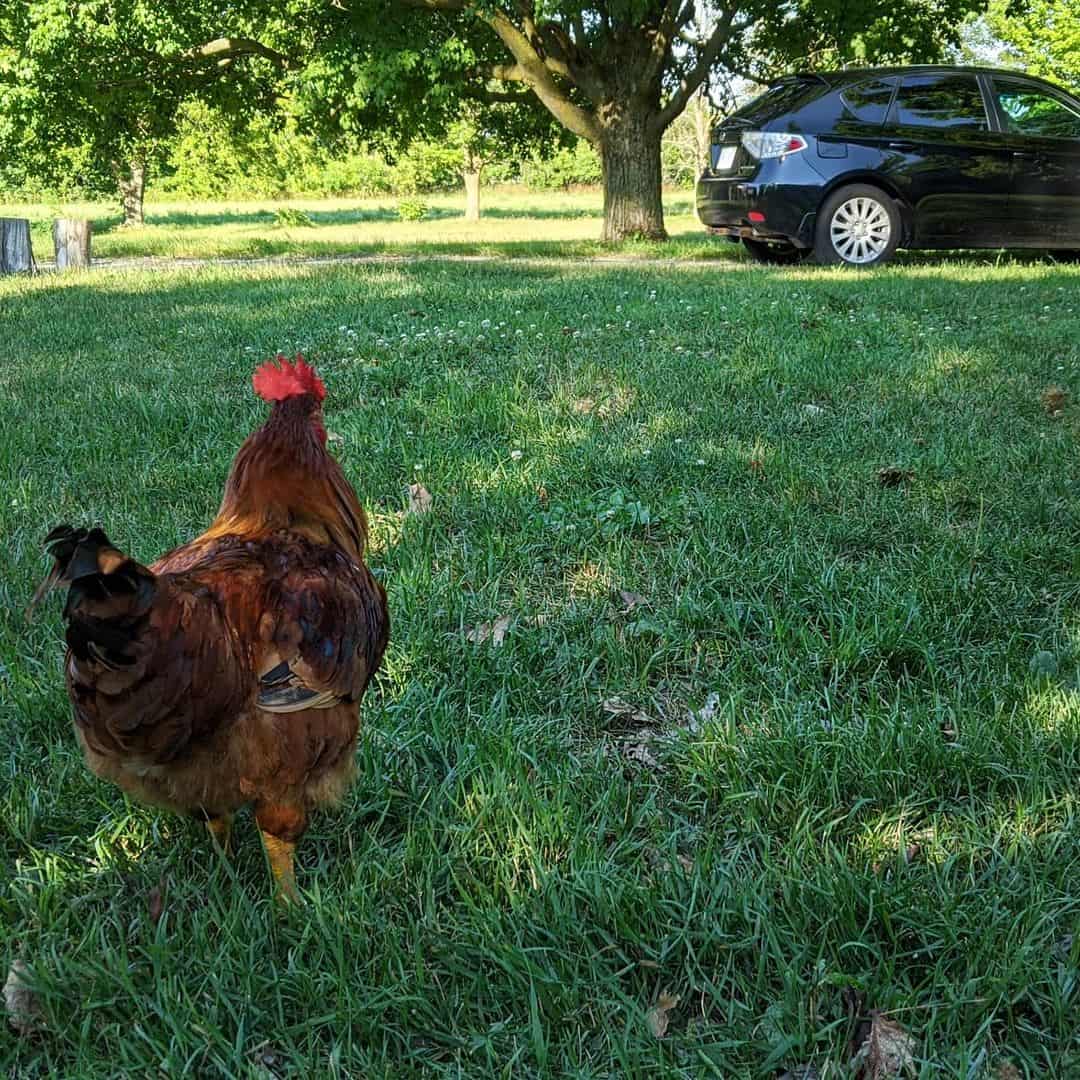
Red Rangers have a reputation for being strong foragers who are happiest as free-range chickens. They are independent and a cage-free lifestyle works best for them.
The good news is that this means you can save money on feed and pest control by allowing your red rangers to find a little bit of food for themselves every day. The excellent foragers that they are, the red rangers will eat up all insects they come across.
The bad news is that this also means that they don’t do well in small spaces.
Furthermore, red ranger chickens are active and energetic, and this, along with their muscular build, means you will probably mostly see them sprinting around. Fortunately, they also have good survival skills and adaptations, unlike most broiler birds.
The color of their body protects them from aerial predators as they appear unappealing. If they come face-to-face with a predator in a free-range situation, they can evade and survive— thanks to their survival instincts.
Also, red rangers are not aggressive or broody. So, if you have other breeds in your flock, don’t worry! Red Rangers will merge in well. Overall, it is a hardy and easy-to-raise breed.
Red Ranger Chicken Meat
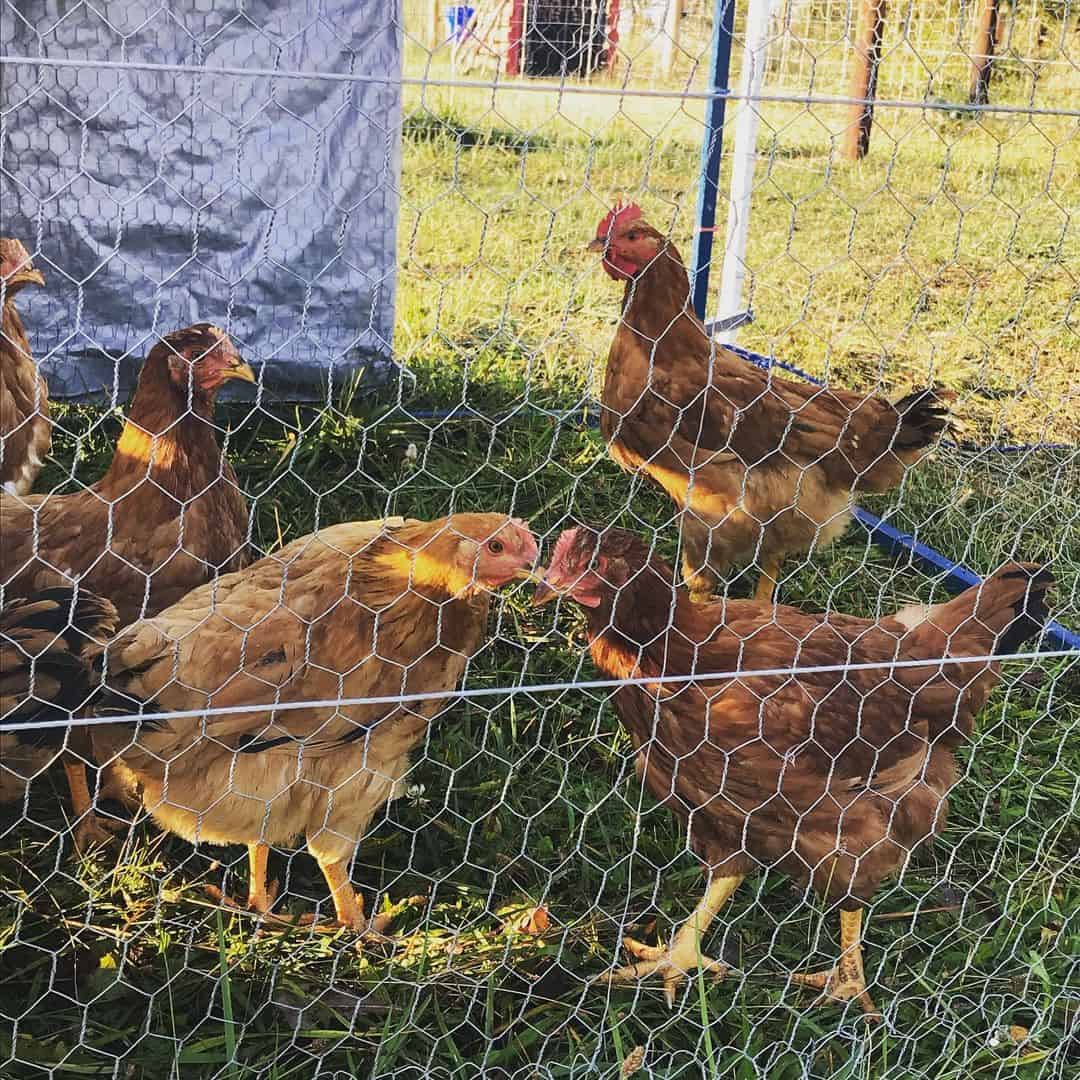
As a dual-purpose chicken breed, a Red Ranger Chicken can give you both meat and eggs, but it is not particularly good at either of these. Chickens of this breed take longer to grow than most broiler breeds. If you compare the meat quantity with Cornish Chicken, red rangers don’t give you a lot of meat.
For this reason, even though the bird reaches its butchering weight at 12-16 weeks, farmers sometimes tend to wait longer to get the chicken more plump. Red Rangers are also not good for breast meat as it is the least developed part of their body.
On the other hand, though, red ranger chickens offer quality and fattier meat than most other broiler breeds. Watch this video by Cogg Hill Family Farm on YouTube for a detailed comparison of the meat of Red Rangers and Cornish Cross Chickens:
Are Red Ranger Chickens Good Layers?
Whether or not red rangers are good layers depends on how you define the term. Red Ranger Chickens produce about 175 eggs every year. These can be large or medium in size, and the color is light brown.
The size, quality, and frequency of eggs greatly depend on what they consume. The more they eat, the more eggs they produce. Similarly, the better they eat, the better eggs they produce. As for the age factor, red rangers typically start producing eggs at 16 weeks old.
Another thing to note is that Red Rangers do not have a tendency for broodiness. Being hybrids, they are sterile and won’t breed true either. If you want to maintain a flock of Red Rangers, you may want to keep getting chicks from a hatchery.
Red Ranger Chickens Health Issues
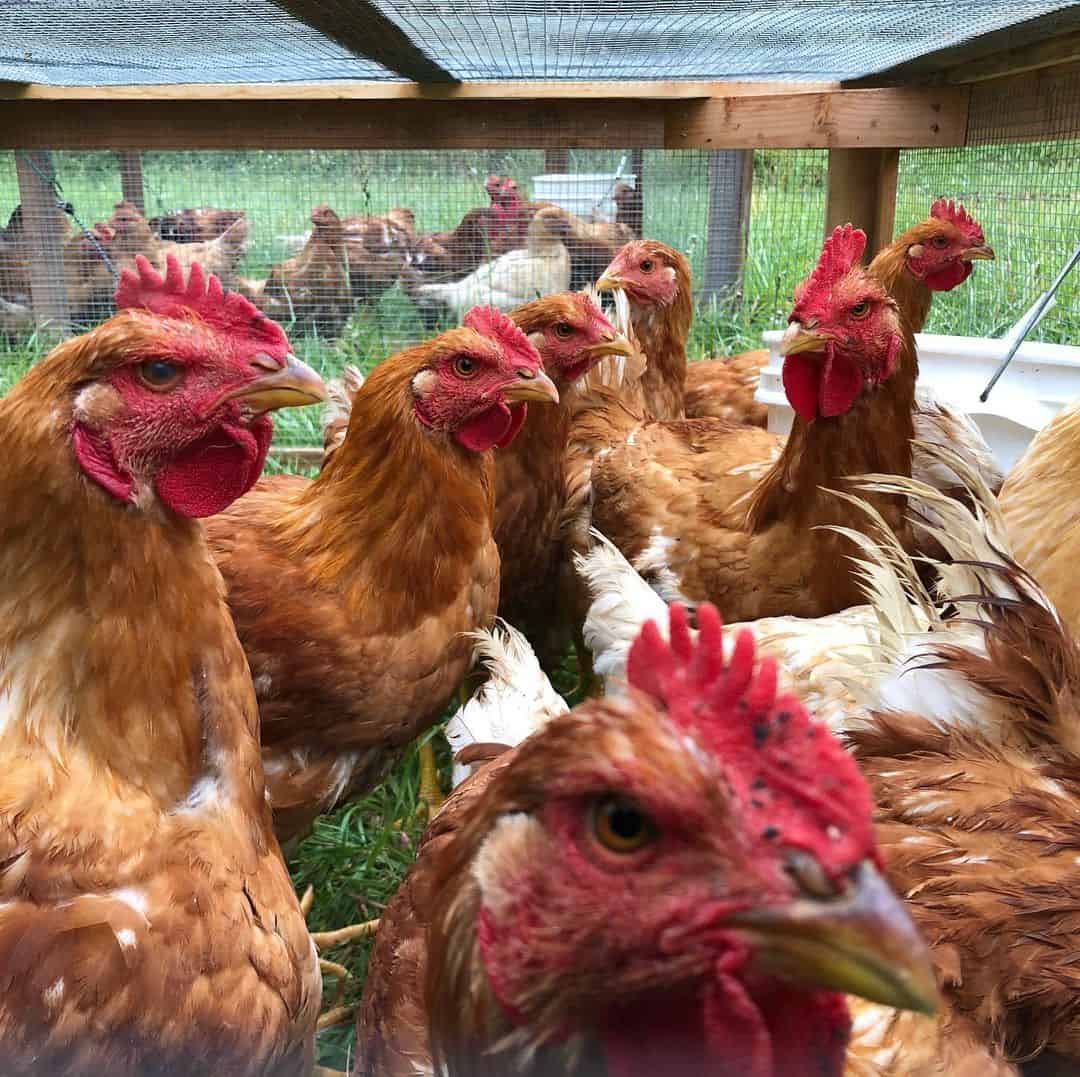
The average life expectancy of a Red Ranger Chicken is 2 years. For broiler birds, 2 years is a good lifespan. Plus, this breed is a healthy one despite the stereotypes around dual-purpose broiler breeds.
Unlike the older broiler breeds, red ranger chickens do not die before adulthood due to heart failure and other health issues. The older breeds were unable to sustain their rapid growth and weight according to their body needs.
But the newer hybrids, including Red Rangers, grow at a comparatively slower rate and do not struggle with these issues. A red ranger can grow up to its full potential without any significant health issues.
Pros and Cons of Red Ranger Chickens
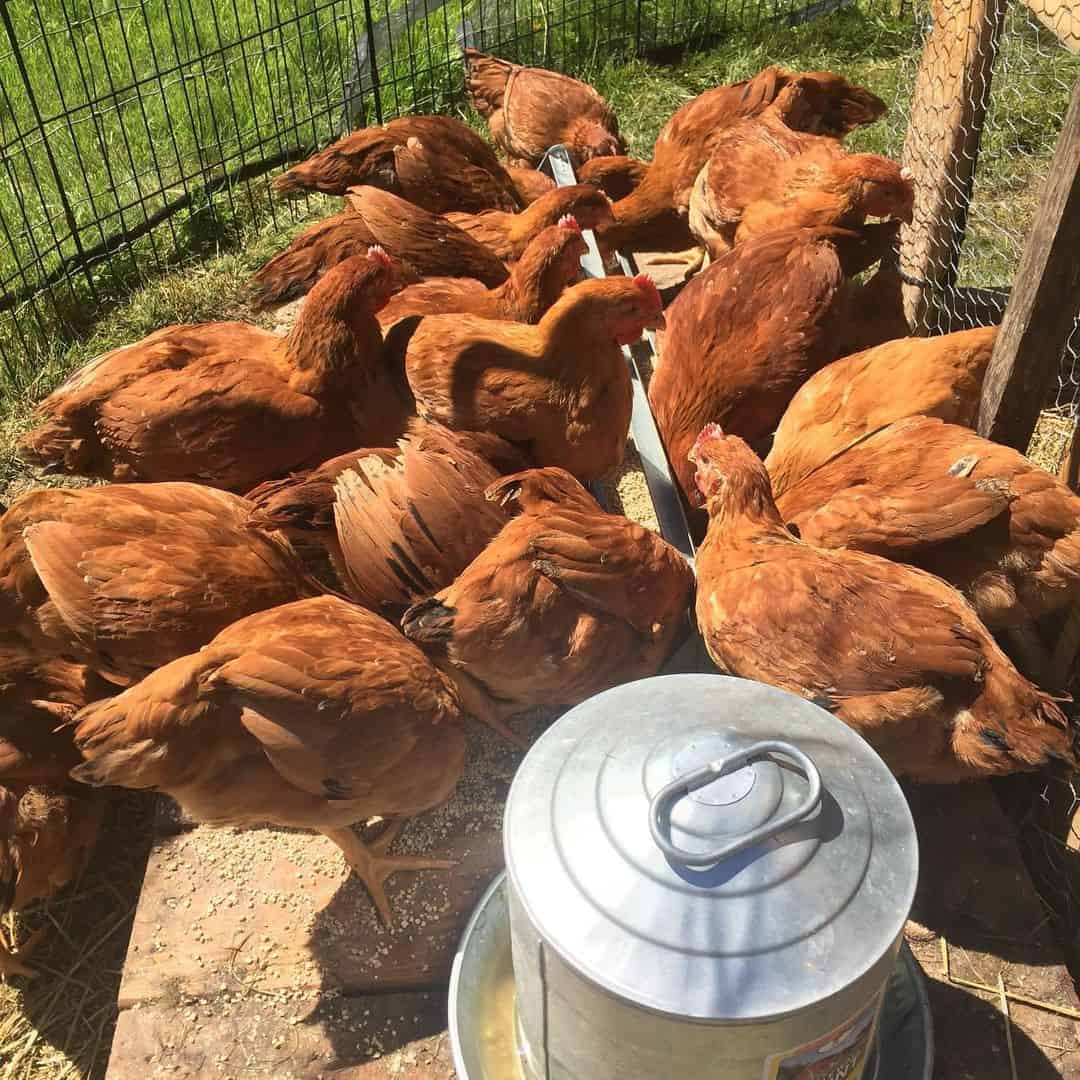
Every breed has its own set of pros and cons. For Red Rangers, there are generally more pros than cons. For example, they are economically advantageous and easy-to-raise.
When compared with other dual-purpose breeds, they consume less feed and put on weight quickly. For every 3 lbs of feed consumed, a red ranger chicken will gain 1 lbs weight.
Secondly, red rangers have more flavorful, proportional, and nutrition-rich meat than other similar breeds, like the Cornish Cross. Farmers can also get a sufficient amount of meat from each bird— 70% of the live weight of a red ranger is edible.
Red Rangers are also very docile, and they get along well with other members of the flock. Apart from that, they are excellent foragers and are not feed driven. So, even if you leave them to feed in their space all the time, it’s not an issue!
They are also less prone to health issues and more weather tolerant than other similar breeds. They can tolerate extremely cold as well as extremely hot weather. Furthermore, their color makes them less attractive to flying predators.
On the cons side, red rangers have more feathers and underlying hair than other broiler chickens like the Cornish Cross. They also don’t grow at a uniform rate.
The red rangers can run from predators, but that doesn’t mean they can defend themselves. So, they’ll need a predator-proof coop as well. Lastly, they are hybrids and sterile. That means, if you want to grow your flock, you can’t count on the existing red rangers to multiply!
In such a case, chicks need to be purchased from hatcheries.
Is the Red Ranger Chicken Breed Right For You?
Now that you have complete knowledge about the breed, let’s address the bigger issue at hand: is it the right breed for you?
First, you must know what you need from a chicken breed. Are you looking for egg layers? Or are you looking for a meat bird?
Red Rangers are moderate egg layers that lay around 175 eggs per year, and their carcasses are also suitable for the table. They’re a cost-effective solution for chicken keepers looking for eggs and meat without spending thousands each year on feed.
If you’re looking for eggs, fatty meat, or both in a chicken, Red Ranger chicken matches your needs.
Next, you must consider if you have an environment that’s compatible with the breed. Red Ranger chickens love spacious environments where they can freely move around and forage. So if it matches your needs, and you have sufficient, Red Ranger is the ideal breed for you.
Alternatively, you can consider the Cornish Cross breed too. Although both breeds are well suited for table fare, Cornish Cross can be an ideal choice if you lack a spacious environment.
Cost-wise, it is also much less costly than the Red Ranger breed. However, unlike Red Rangers, Cornish Cross chickens are much more prone to health issues and are expected to live less than the red ranger chickens.
So, if you only require meat from the chicken, Cornish Cross is an ideal fit with an average slaughtering age of 8-10 weeks. On the other hand, if you’re looking specifically for an egg-laying breed, consider keeping the Golden Comet. They lay 250-320 eggs a year.
And if you’re looking for a dual-purpose alternative chicken breed, Black Australorp ticks all the boxes. It’s an excellent egg layer and a heavy breed with lots of meat. Also, it’s not a rare one and is easily available in most hatcheries.
FAQs
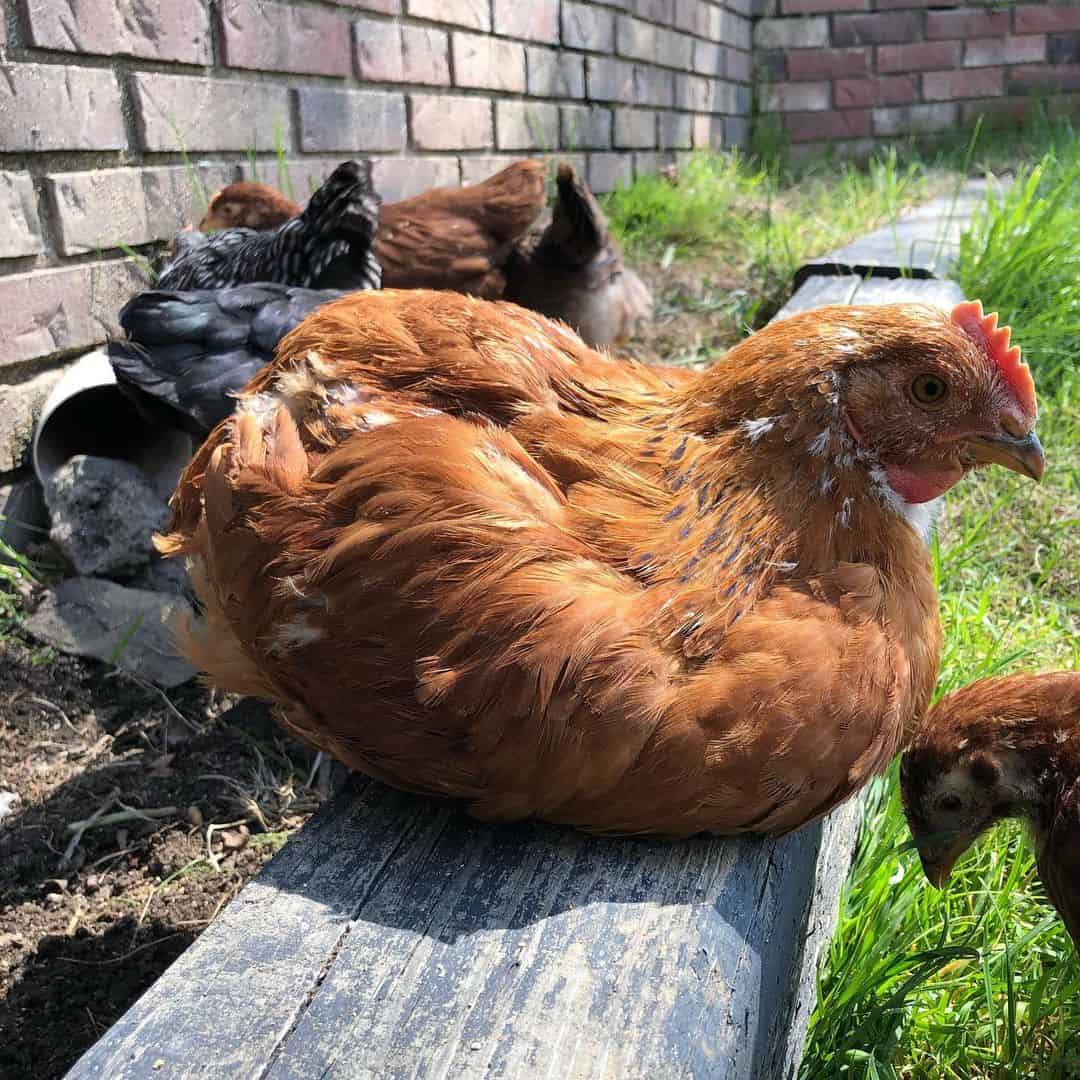
What is the difference between a red Ranger and a Freedom Ranger?
Too often, people mix up the Red Rangers with other breeds with similar names, including Freedom Ranger, Rainbow Ranger, Dixie Ranger, and Gingernut Ranger. Even though they all are red boiler birds, and they look and sound the same, they are most certainly not the same.
All these chicken breeds come from different hatcheries and are trademarked under different names. Essentially, the difference is that of trademarks. The freedom ranger breed is trademarked by the Freedom Ranger Hatchery, and the red rangers are not.
Other than that, Red Rangers are fast-growing hybrids raised for “food” purposes, whereas freedom rangers are pasture-raised birds. Also, the freedom ranger chickens come in different colors and body types.
How much do you feed Red Ranger chickens?
How much you feed red ranger chickens is generally the same as all other meat chickens. At 8-9 weeks, Red Ranger chickens typically eat about 2.5 pounds of feed per pound of live weight.
At 10-11 weeks, they eat about 2.7-2.8 pounds of feed per pound of live weight. At 20 weeks, it’s about 22 pounds per chicken.
For the first 16 weeks, the ideal diet for Red Ranger Chickens is a chick starter. You can then add about 20% of the protein to their diet and give them free-ranging space. Also, to keep the diet varied, make sure to add supplemental treats like apples, celery, tomato, bananas, crickets, and broccoli.
What are Red Ranger Chickens good for?
Red rangers are cross-breeds designed for both meat and egg production. So, these chickens are good for both purposes.
Although they do not particularly excel at either, they can serve well as an interim breed while you wait for other breeds to either be at the right age for laying or butchering.
It is also an excellent breed for pest control— Red Rangers are strong foragers and will eat any and every insect they can find.
Conclusion
Summing it up, the red ranger chicken breed is a hybrid dual-purpose one. They are light red and brownish in color and have a muscular build.
With excellent foraging skills and moderate survival skills, they are easy to maintain and care for, especially for small flock owners on tight budgets. Ideally, red rangers work best for flock owners looking for a breed that lays eggs in fair quantity and can also be used as table fare later on.
Alternatives to the Red Ranger Chicken breed include Cornish Cross (dual-purpose; excellent for meat), Golden Comet (egg-laying), and Black Australorp (dual-purpose).

